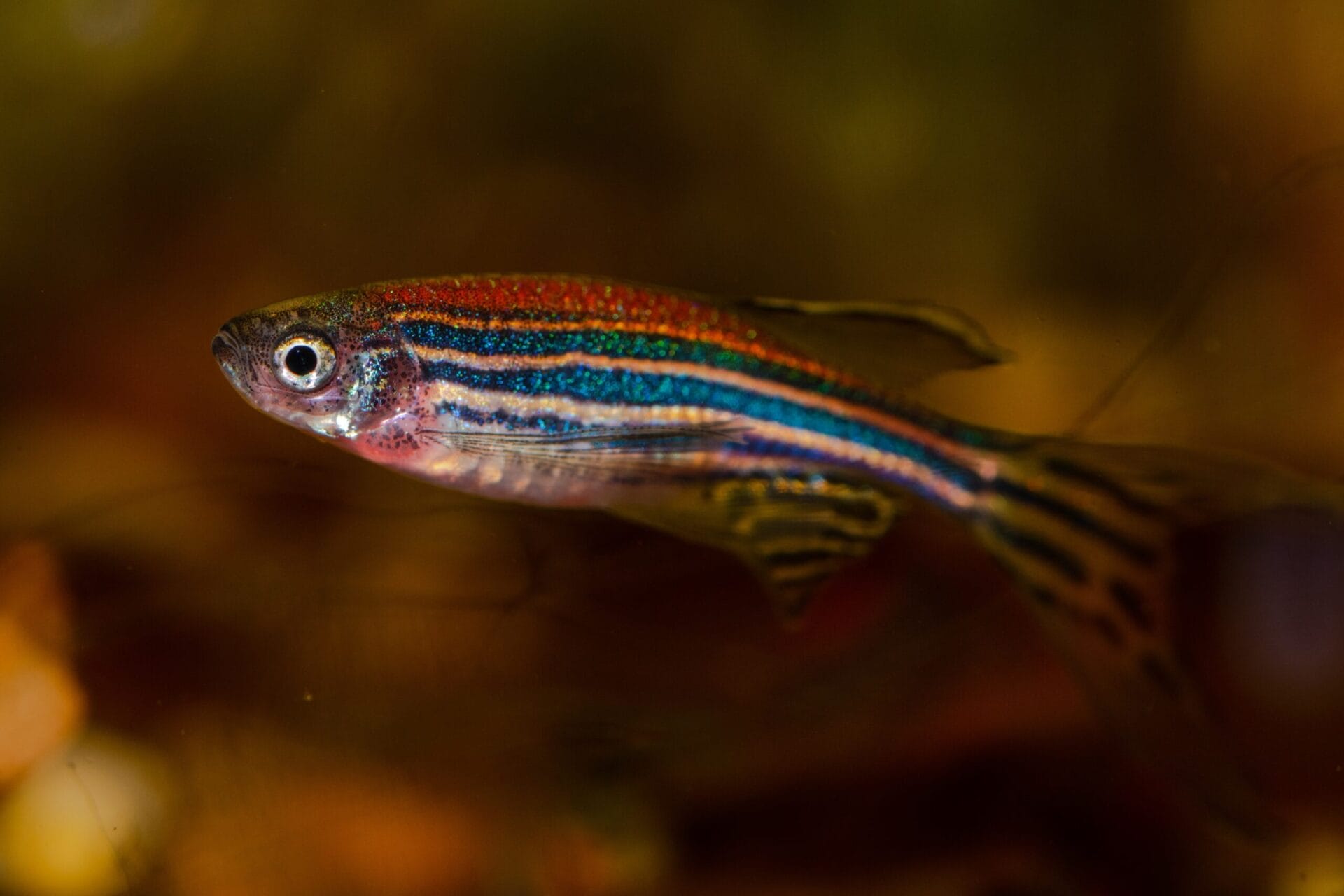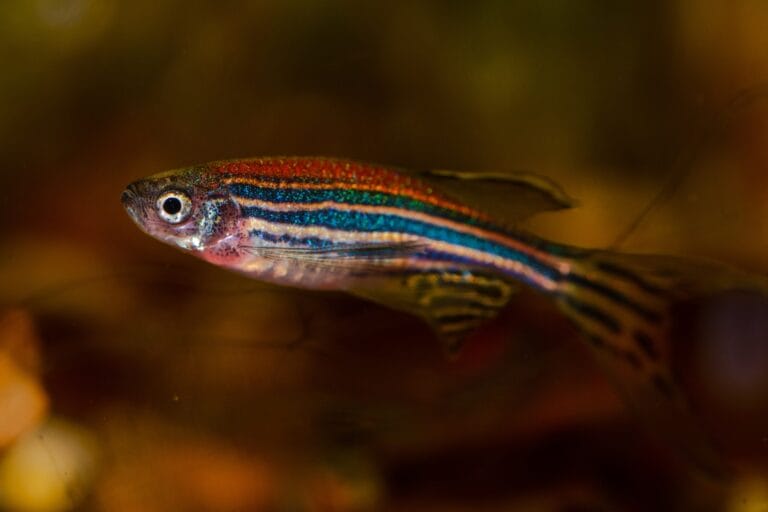Model organisms: the zebrafish
An image of a Zebrafish. Image credit: Pixabay

Since the 1960s, the zebrafish (Danio rerio) has become increasingly important to scientific research. It has many characteristics that make it a valuable model for studying human genetics and disease.
- Model organisms are non-human species that are used in research to help us understand specific areas of biology.
- The use of zebrafish (Danio rerio) as a model organism began in the 1960s.
- Zebrafish have already been used to help unlock a number of the biological processes behind muscular dystrophy, and are an important model for understanding the mechanisms of development and diseases such as cancer.

The zebrafish (Danio rerio)
- The use of zebrafish (Danio rerio) as a model organism began in the 1960s.
- The zebrafish is a tropical fish native to southeast Asia.
- The zebrafish is about 2.5 cm to 4 cm long.
- In its larval stages it is transparent and as it matures to an adult it develops stripes that run along the length of the body and look blue in colour.
- Males are slender and torpedo-shaped usually with a pink or yellow tinge.
- Females tend to be less pink than the males and are fatter due to the eggs they carry.
- Zebrafish have already been used to help unlock a number of the biological processes behind muscular dystrophy, and are an important model for understanding the mechanisms of development and diseases such as cancer.
- The complete genome sequence of the zebrafish was published in 2013.
- Its genome is 1,505,581,940 base pairs in length and contains 26,247 protein-coding genes.
What are some of the benefits and limitations of using the zebrafish as a model organism?
Benefits of using the zebrafish
- The zebrafish is small and robust.
- They are cheaper to maintain than mice.
- Break of daylight triggers mating in zebrafish (many other fish only lay eggs in the dark).
- Zebrafish produce hundreds of offspring at weekly intervals providing scientists with an ample supply of embryos? to study.
- They grow at an extremely fast rate, developing as much in a day as a human embryo develops in one month.
- Zebrafish embryos are nearly transparent which allows researchers to easily examine the development of internal structures. Every blood vessel in a living zebrafish embryo can be seen using just a low-power microscope.
- As zebrafish eggs are fertilised and develop outside the mother’s body it is an ideal model organism for studying early development.
- Zebrafish have a similar genetic structure to humans. They share 70 per cent of genes with us.
- 84 per cent of genes known to be associated with human disease have a zebrafish counterpart.
- As a vertebrate, the zebrafish has the same major organs and tissues as humans. Their muscle, blood, kidney and eyes share many features with human systems.
- Zebrafish have the unique ability to repair heart muscle. For example, if part of their heart is removed they can grow it back in a matter of weeks. Scientists are working to find out the specific factors involved in this process to see if this will help us to develop ways of repairing the heart in humans with heart failure or who have suffered heart attacks.
- The zebrafish genome has been fully sequenced to a very high quality. This has enabled scientists to create mutations? in more than 14,000 genes to study their function.
Limitations of using the zebrafish
- Zebrafish often have multiple copies of genes (paralogs) - meaning some genes may not be functional
- Low level inbreeding of zebrafish populations used in research may alter their behaviour patterns, making the impact of genetic changes harder to analyse
- Zebrafish have a preferred temperature of around 28°C, which can limit their use in studies where mammalian temperatures are important